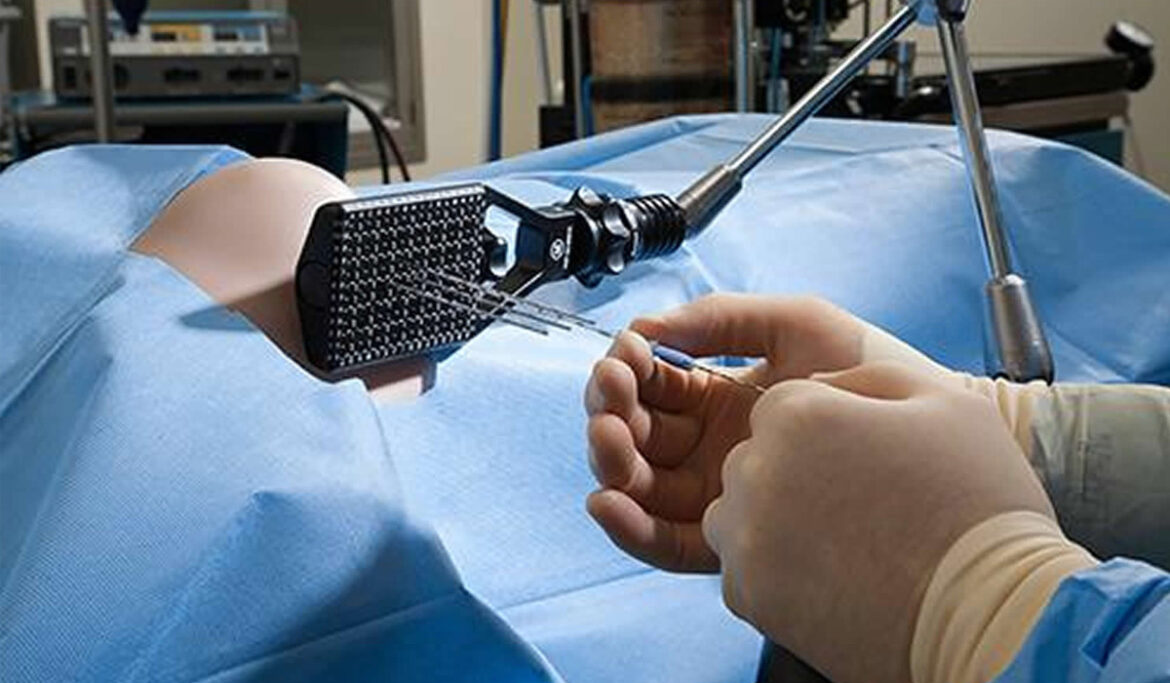What is Brachytherapy ?
Brachytherapy, also known as internal radiation therapy, is considered as one of the type of radiation therapy for treating cancer. A radioactive material is placed within the tumor or close to the tumor. The technique of Brachytherapy is used for delivering a higher dose of radiation for treating a small area in a very less time as compared with external beam radiation treatment.
The different types of cancers throughout the body are treated by Brachytherapy that may include –
- Eye
- Prostate
- Vagina
- Head and Neck
- Rectum
- Uterus
- Skin
- Gallbladder
- Cervix
- Breast
- Lung
Equipments used in Brachytherapy
The placement of a radioactive material is done on the tumor site by using a special delivery device in the case of permanent implants. The placement of specialized accelerators, needles, temporary implants or plastic catheters are done on the site of the treatment. Iridium, Iodine, Cesium and Palladium are the radiation sources that are used in Brachytherapy. The radiation source in every case of Brachytherapy is encapsulated that helps in preventing the radioactive material from entering into the body of a patient.
The insertion of the radiation sources are then done when it is confirmed that the devices are accurately positioned. The radioactive material can either be inserted or removed after inserting radiation sources using a computer-controlled remote after loading machine or by placing the delivery device. The radioactive material can be positioned in a better way so as to treat the tumor effectively. This is done by performing MRI, X-rays, CT or ultrasound scans. The time required for delivering radiation dose to the tumor and position of the source is calculated by using a computer.
Brachytherapy Types
- Unsealed Internal Radiation Therapy : An injection of a medication having radioactive materials is done into a body cavity or a vein.
- Interstitial Treatment : The placement of the radioactive implants is done inside the tumor that can stay permanently inside the patient.
- Intracavitary Treatment : The placement of radioactive implants is then done within the body cavities like uterus or the vagina.
Two Types of Brachytherapy Implant
Temporary Brachytherapy : This type involves the removal of the implants after the completion of the treatment. Balloons filled with fluid, hollow needles and catheters are the different types of implants that are used at the time of treatment that are removed after the completion of the treatment. Low dose or high dose Brachytherapy can also be used.
Permanent Brachytherapy : Seeds or pellets small size implants are used in permanent Brachytherapy. The insertion of these implants is then done in the tumor through the hollow needles. The small-sized implants are then left in place as they do not result in any discomfort or pain.
Brachytherapy Techniques
High Dose Rate (HDR) : HDR makes use of a higher strength radioactive source that is inside the afterloader device. The delivery of the source is then by the afterloader for a short time to other appliances, catheters or needles that are placed into the site of the tumor. HDR is considered as a shorter procedure.
Low Dose Rate (LDR) : LDR makes use of a lower strength radioactive source that is related with longer treatment times. Prostate is considered as a most common treatment site of LDR where small radioactive seeds in the prostate tissue are permanently placed.
Image Guided Brachytherapy (IGBT) and Pulse Dose Rate (PDR) are the other techniques of Brachytherapy.
Procedure of Brachytherapy
The placement of thin catheters is done in the tumor in the case of high-dose rate (HDR). HDR afterloader is then attached with the catheters. A single radioactive iridium pellet is contained inside the HDR afterloader at the end of a wire. The computer then controls the pushing of the pellet one by one into each of the catheters. The time required by a pellet to stay inside every catheter controlled by the computer and also the catheter must pause to release its radiation. High-dose rate Brachytherapy offers an accurate treatment that takes very less time. The removal of catheters and the radioactive seeds is then after the completion of the treatment.
Benefits of Brachytherapy
- Simplified Palliative Treatment Option
- Highly targeted conformal treatment for improved sparing of healthy tissue and increased efficacy.
- Brachytherapy can be considered as an alternative treatment for several challenging cases
- Brachytherapy has the potential to avoid prostatectomy
- The duration of the treatment is reduced for several types of cancer
